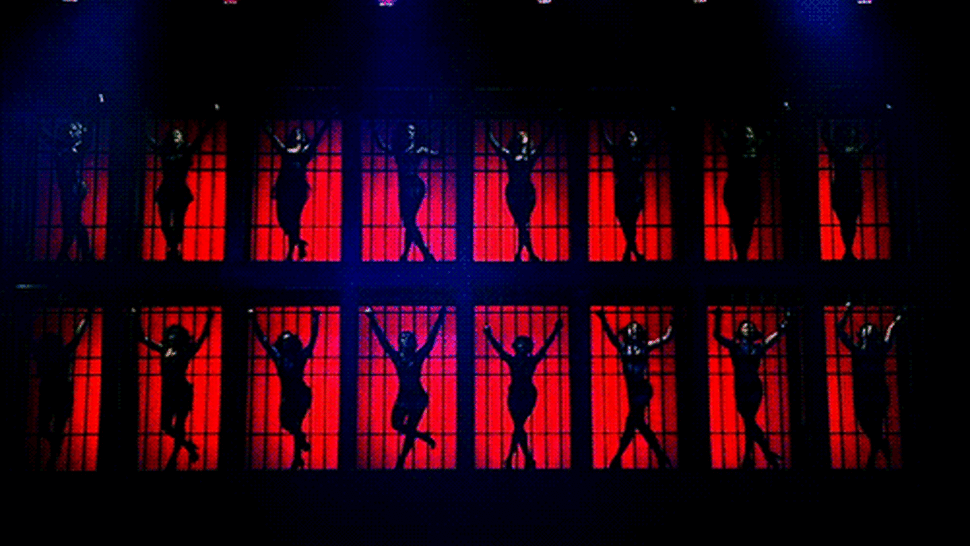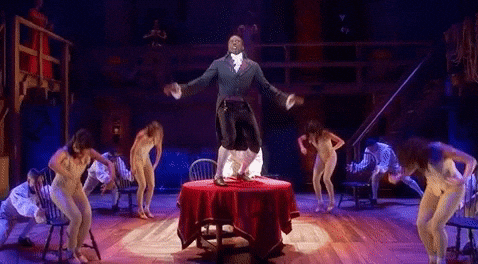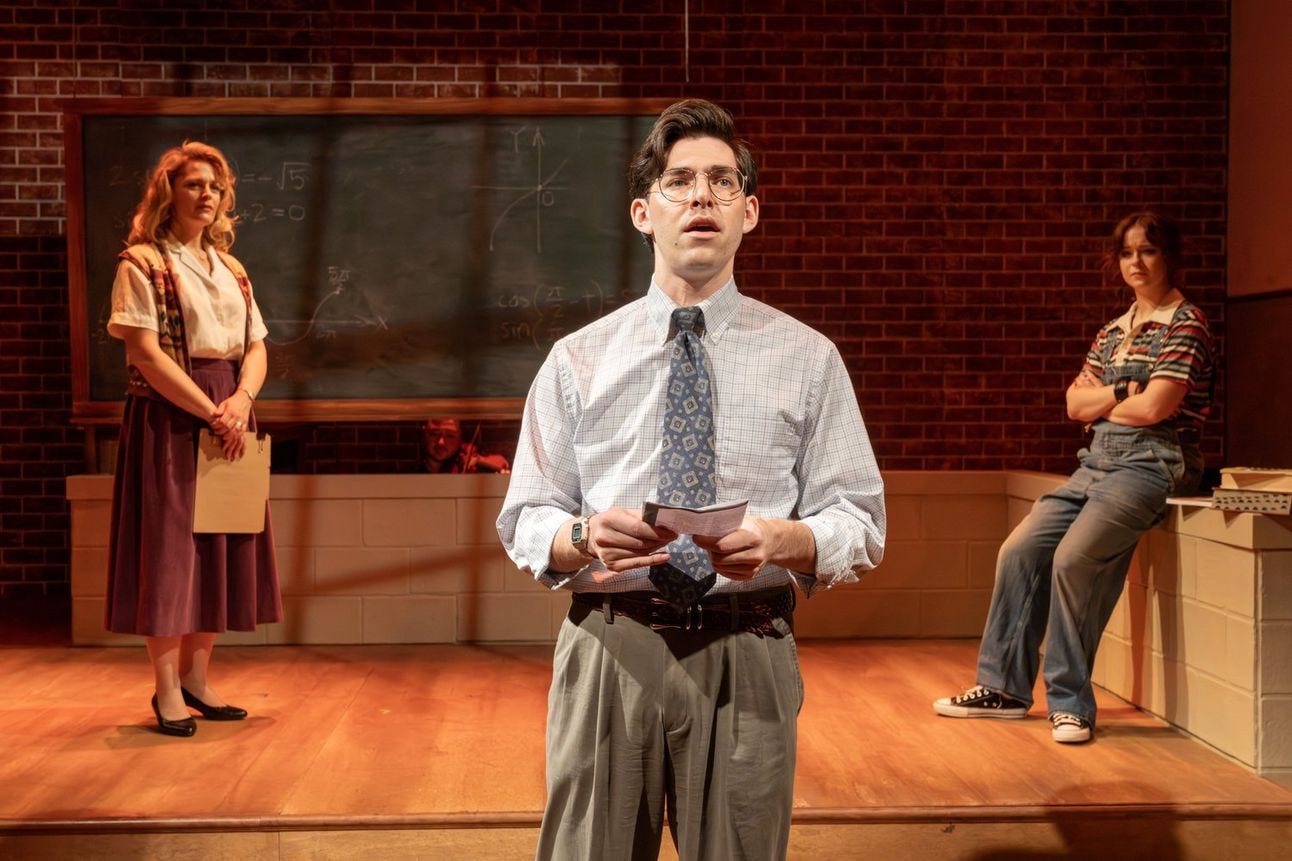
Good morning 👋🏼 Good news: this is not a think piece about the barrage of tariffs swamping the news cycle.
While someone smarter than me could probably write a dissertation on how rising costs and market volatility might impact the theater industry—I’ve been, in true existential theater kid fashion, thinking about what those ideas mean for us as creatives.
Because whether you’re trying to write a play, market a show, or simply post something that feels honest—there are costs. Always.
And in an industry obsessed with “taking stock” of itself—where every week we’re either in a downfall or a renaissance (and never anything in between?)—those costs can be hard to see clearly.
So this week, I’m thinking about creative tariffs.
The external ones.
The internal ones.
How instability and possibility go hand in hand.
And why any of this matters.
Let’s get into it.
The External Tariffs
we had it coming all along
In traditional trade, tariffs are meant to protect an economy. In creative work, they often protect the status quo. They add invisible costs—barriers, delays, and conditions—to anything that challenges the market’s definition of what's “viable.”
You hear it in notes, meetings, approvals, and emails:
“We can’t say that.”
“That won’t sell.”
“That’s too political.”
“Where’s the audience for this?”
“You’re not quite right for that.”
These are the tolls we pay to pass through the system. They shape who gets to create, what gets greenlit, and how the work has to bend to fit “the market.” Whether it’s a pitch, a piece of content, a self-tape, or a whole production, the message is often the same: bold is good—until it makes someone uncomfortable. Original is great—until it feels unfamiliar.
We’re asked to make something new, safe, viral, and universal—all at once. That kind of creative calculus flattens everything. And it doesn’t just affect the final product—it reshapes the entire process. What gets pitched. Who gets called in. How stories are told, sold, and softened.
Actors, writers, designers, producers, and marketers all know the feeling of being told—directly or indirectly—to shrink what we’re offering in order to make it more “palatable.” Sometimes the ask is explicit. More often, it’s embedded in the culture. A quiet caution that says: play it safe if you want to stay in the room.
And whether you’re making the work, selling the work, or simply auditioning to be part of it, the underlying message is often the same: don’t be too risky. Don’t be too loud. Don’t be too much.
What begins as a structural barrier often becomes a personal one. And we carry the weight of the industry inside our own creative process.
The Internal Tariffs
These aren’t the tolls the industry imposes.
They’re the ones we start to impose on ourselves.
They often begin quietly—so quietly we mistake them for caution or common sense. We second-guess the idea before we write it down. We soften our voice to feel more professional. We tweak our tone to sound more “marketable.” Over time, we learn to anticipate the no. So we stop before anyone else can.
Some of these tariffs show up as self-doubt. Others as perfectionism. And many as code-switching—changing how we speak, perform, or express ourselves to fit the expectations of a space that wasn’t built with us in mind. We adjust, adapt, rehearse. Not because we’re unsure of what we want to say, but because we’re trying to protect it—and ourselves—from being misunderstood.
And when we do share something—an idea, a pitch, a performance—the cost doesn’t end there. Because even when the feedback isn’t personal, it can still feel personal. That’s the paradox of making something honest: it invites connection, but also exposure.
These are the internal tariffs: the invisible costs of being vulnerable, of staying true, of putting anything real into the world. They don’t show up on spreadsheets. But they’re just as real as the structural barriers—and often harder to name.
The Volatility Paradox
If you’ve spent any time in a rehearsal room, in tech, or watching the grosses fluctuate week to week, you already know—this industry doesn’t move in a straight line. The swings are sharp. One week you’re trending, the next week you’re closing. Momentum is real, but it’s not stable.
It’s tempting to read this volatility as a flaw. As proof that something’s broken. But what if it’s just how the system works? And more importantly—what if it’s also where the opportunity lives?
In traditional markets, volatility is where investors see potential. When prices drop, they don’t always pull back—they buy in. Because the dip doesn’t just represent loss. It represents possibility. A chance to try something new, take a bigger swing, or invest in the kind of creative risk that doesn’t get cleared during peak season.
When things feel uncertain—when the budget is tight, or the press isn’t landing, or the energy around a project is starting to wobble—that’s often when bold ideas have the most room to breathe. There’s less pressure. Less scrutiny. More creative slack in the system. Ironically, the moments that feel the most unstable are often the ones where something truly original can be made.
Volatility isn’t comfortable. But it’s natural. And in many cases, it’s necessary. Instability doesn’t just shake things up—it clears the space. For innovation. For reinvention. For something new to emerge that couldn’t exist when everything was “working.”
The drop doesn’t mean the work is over. It might be the beginning of the work that actually matters.
Now What?
The tariffs we face—external, internal, and emotional—aren’t always avoidable. They’re baked into the systems we work within, and often into the identities we carry with us. But if we can’t always avoid them, we can at least stop pretending they’re invisible.
But naming them changes the work. Not just the art itself, but the process of making it. The conversations we have. The expectations we hold. And it gives us permission to ask questions we might not have known we were allowed to ask.
What am I giving up to make this feel more “marketable”?
Whose approval am I designing for?
Is this feedback about the work—or about the system that surrounds it?
When we name the toll, we stop mistaking it for truth.
The goal isn’t to avoid every cost. It’s to know when you’re paying one—and decide for yourself if it’s worth it.
☝🏼 One last thing…
hey look its me
We’re in our final week of previews for All The World’s a Stage, and the process has been equal parts joyful and physically demanding—more than I expected, if I’m being honest. It’s taken a toll on my body and mind in ways I didn’t fully anticipate. And because of that, I’ve had less time and energy to give to creating content, sharing behind-the-scenes, or promoting this newsletter the way I hoped I would.
But I’m naming that. And in doing so, I’m releasing it.
It’s a cost I’ve chosen to carry, and a tradeoff I don’t regret.
What’s surprised me most isn’t just the external exhaustion—but the internal excavation. Being 33, ten years into my life in New York, and being trusted with a lead role in a new musical has unearthed things I didn’t know I was holding. Insecurity. Expectation. Pressure. Pride. Imposter syndrome. All of it.
But I’ve also been met—again and again—by the grace of the people around me. I’ve leaned heavily on my friends and family these past few weeks. And I’ve been blown away by their capacity for love, for support, and for reminding me who I am when I can’t quite see it for myself.
That, too, is part of the work. And it’s a toll I don’t mind paying.
If you’re feeling stretched, or behind, or like the work (or life as a whole) is costing more than you planned—I see you. This season is asking a lot from all of us. But maybe naming that is its own kind of progress. Maybe the toll is also a signal: that you're building something real, and you're not doing it alone.
See you next week ♥️
—Matt






